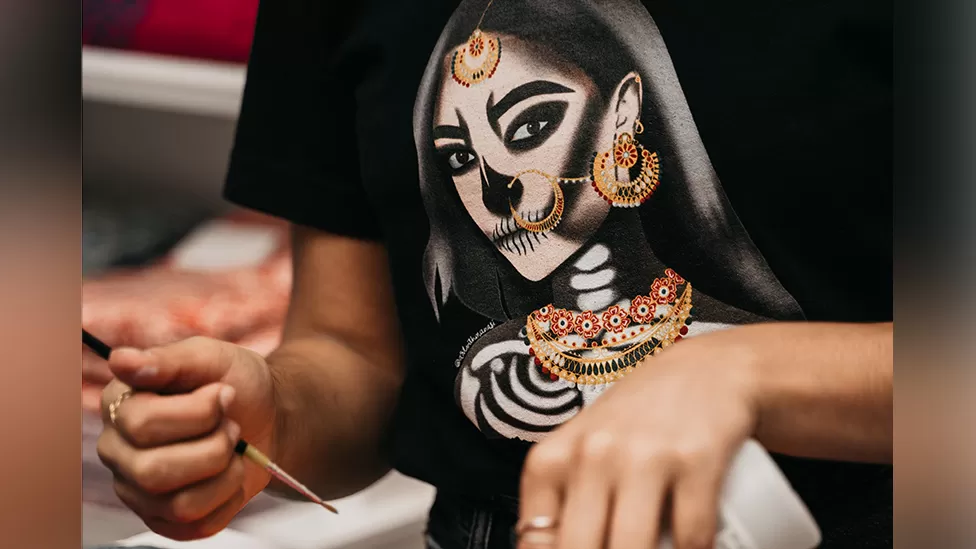Halloween: Artistic Desi Creations Fostering Cross-Cultural Connections
During her childhood, artist Manasi Arya’s greatest Halloween apprehensions didn’t revolve around ghouls, ghosts, or monsters.

The Intersection of Halloween and Desi Culture in Manasi Arya’s Art
Manasi, a first-generation Indian-American immigrant, faced a challenge when it came to fitting in during the spooky season at school. She yearned to participate like her peers but was unable to do so, as the American holiday was not a tradition in her household.
Rather than purchasing a Halloween costume, her mother suggested that she simply wear her Indian attire. Thus, instead of conforming to the Halloween norm, Manasi and her mother decided to participate in a pumpkin competition. Their pumpkin featured a design of an Indian woman adorned with traditional jewelry.
Their victory in the competition led Manasi to a profound realization: the two aspects of her identity, her Indian heritage and her American surroundings, could harmoniously coexist.
Skeletons adorned with jhumkas
Manasi drew inspiration from her experiences to create a collection of clothing that seamlessly merges South Asian women in traditional cultural attire with classic Halloween elements.
For instance, one of her T-shirts features the iconic Ghostface mask from the Scream horror movie franchise, embellished with a distinctive red bindi dot on the forehead. Another design showcases a skeleton bedecked in oversized Indian earrings, known as jhumkas, and a decorative headpiece called a tikka.
Manasi has received an overwhelmingly positive response to this line, which she initiated three years ago. Indian parents have expressed gratitude for providing a “fun but educational” way to introduce their children to their cultural heritage.
However, Manasi’s work also delves into a more profound dimension, as debates about Halloween costumes and their cultural implications have circulated on social media for some time. While some argue that dressing up as their admired icons is acceptable, others criticize such actions as “cosplaying” characters from different cultures.
This is a situation that Black British influencer, activist, and musician Solana has personally encountered.
Earlier this month, Solana shared a TikTok video recounting her experience during the Leeds Otley Run, a popular student pub crawl she participated in last year. During the event, she came across a white man wearing a “Jamaican” costume that included an afro wig.

Upon noticing Solana and her Black friends sitting across from him, the man removed the wig. This incident prompted Solana to question, “Why would they feel the need to do that if the costume they were wearing was okay?”
Solana strongly emphasizes that “cultures are not costumes.” She advocates that if people wish to dress up, the emphasis should shift away from perpetuating cultural stereotypes and instead focus on expressing a personal sense of style.
Manasi further highlights that some questionable costume choices stem from individuals’ ignorance about cultural attire and its origins. She recalls an incident when she confronted a white girl who was wearing a bindi without understanding its significance as a third eye symbol in Hinduism, assuming it was merely a decorative accessory.
Manasi aspires for her clothing line to serve as a means for people to gain a deeper understanding of South Asian culture and initiate a dialogue on the fine line between appropriation and appreciation.
She asserts her comfort with anyone wearing her clothing, especially since it primarily consists of T-shirts, sweaters, and denim.
However, it’s evident that her designs have kindled inspiration among the younger generation, filling a void that Manasi experienced during her own childhood. She recounts an encounter with a young Indian girl who expressed how her art had inspired her. This young girl decided to dress up as a “desi witch” for Halloween, donning a striking ensemble that included a green and black sari paired with a witch’s hat.
By: M Z Hossain, Editor Sky Buzz Feed















